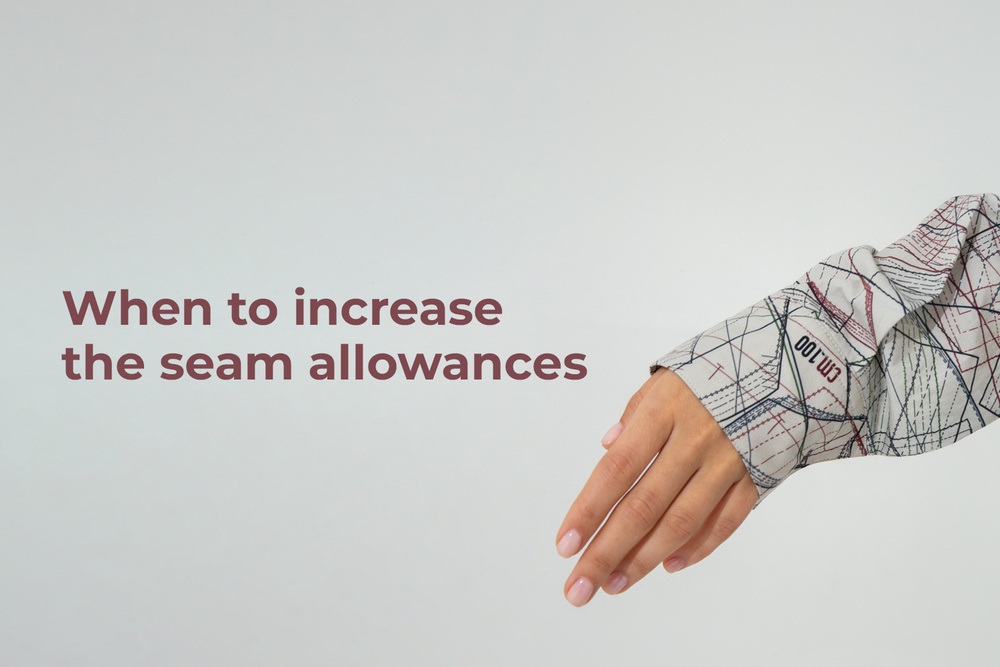To continue the topic about seam allowances, let’s discuss what you need to take into account before cutting and when should the seam allowances increase?
There are several instances:
- If the fabric frays or has shifting in the seams, then the amount of seam allowances needs to increase up to 1.5-2 cm;
- If you use a type of seam finish that implies large seam allowances (for example, the flat felled seam);
- If the fabric is thicker or denser than recommended in the sewing pattern;
- If you didn’t make a muslin and sewed immediately from the main fabric yet, at the same time, your measurements differ from the standard measurements. Here you need to increase the seam allowances up to 1.5-3 times, because a 1 cm margin doesn’t assume entering modifications in the construction.
Seam allowances that are too big aren’t good as well because it can interfere the construction of the fit. So, an extra 2 cm along the cap of the sleeve and the armhole will prolong the seam, dig into the armpit, and will not give an opportunity to see the fit. It’s also the same for the neckline. Don’t forget to reduce the seam allowances after fitting because they will interfere with assembly.
If you cut out the garment with seam allowances included in the patterns – then, in fitting, you can only make corrections to reduce ease at the expense of the accounted wearing ease.
It’s possible to not change the width of seam allowances in instances, if:
- You have a standard figure;
- A muslin was sewn, it’s tailored based on your figure, and changes were made in the patterns;
- The fabric’s thickness is similar to the recommended and doesn’t fray;
- You don’t modify the technique for assembly of the garment, in other words, you use the same seams recommended in the instructions for sewing.
We hope, that became a little clearer. :)
Read more:










Здесь пока нет комментариев